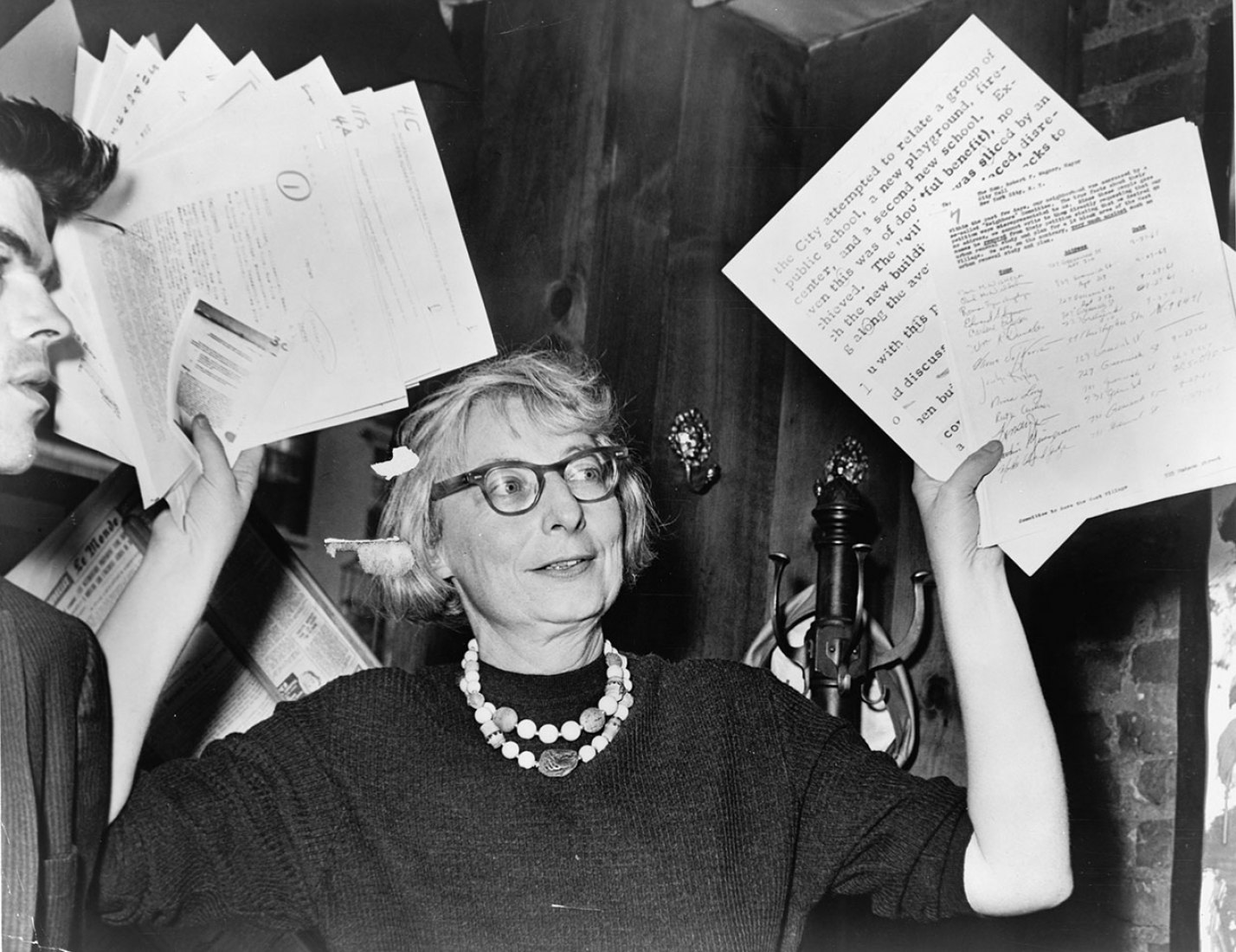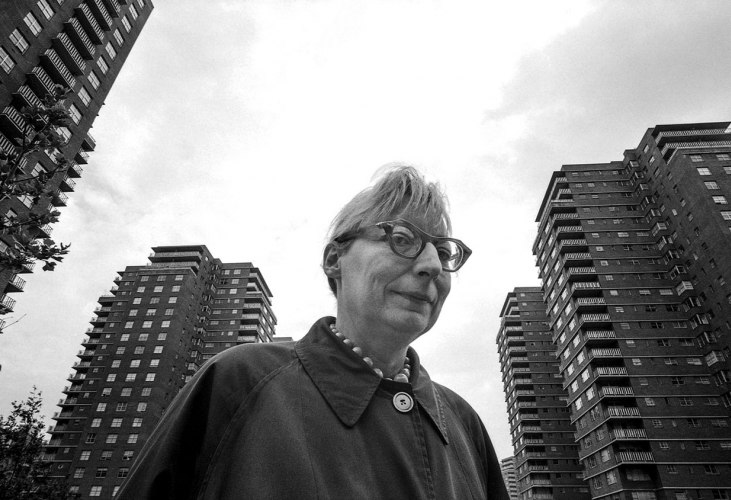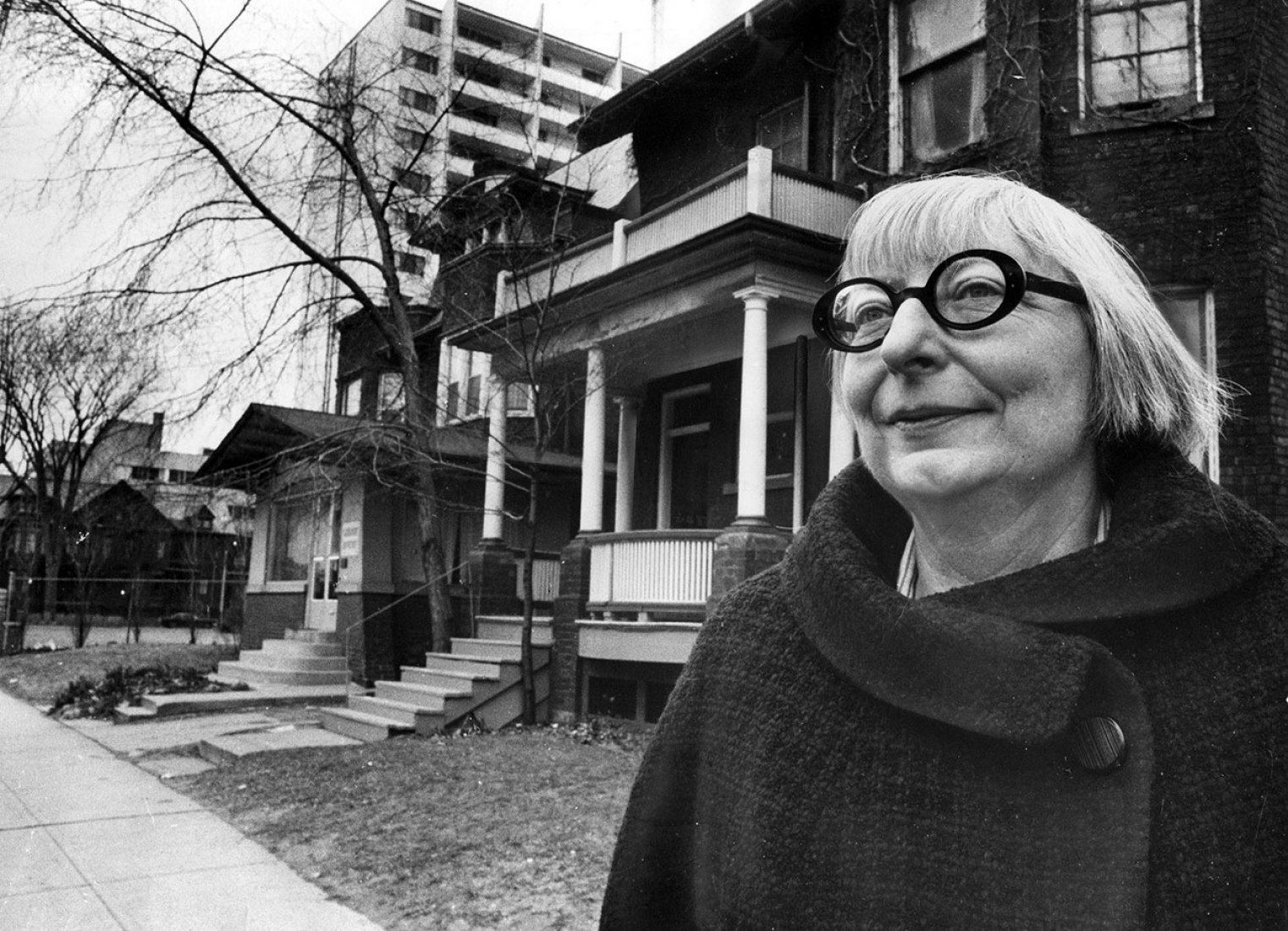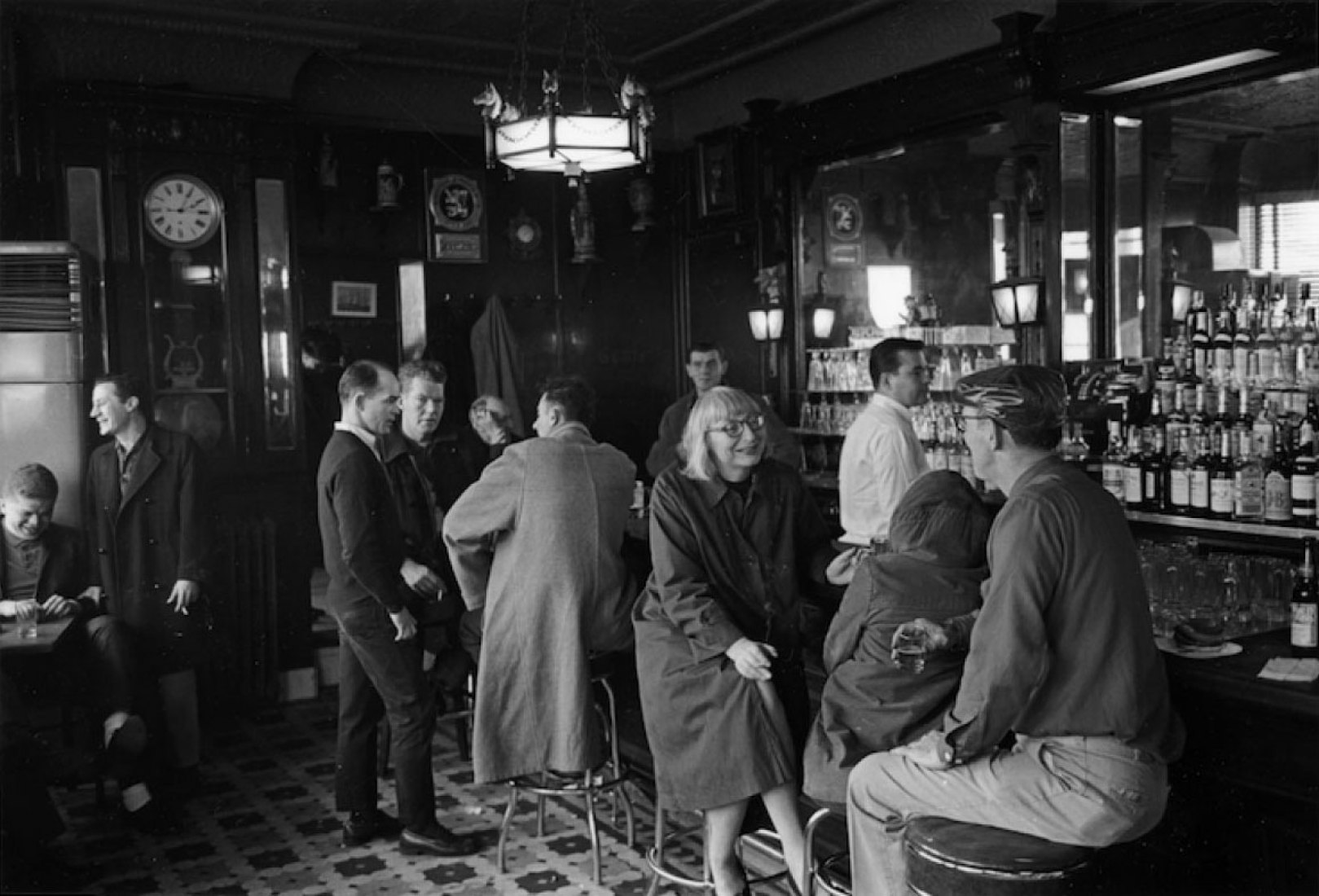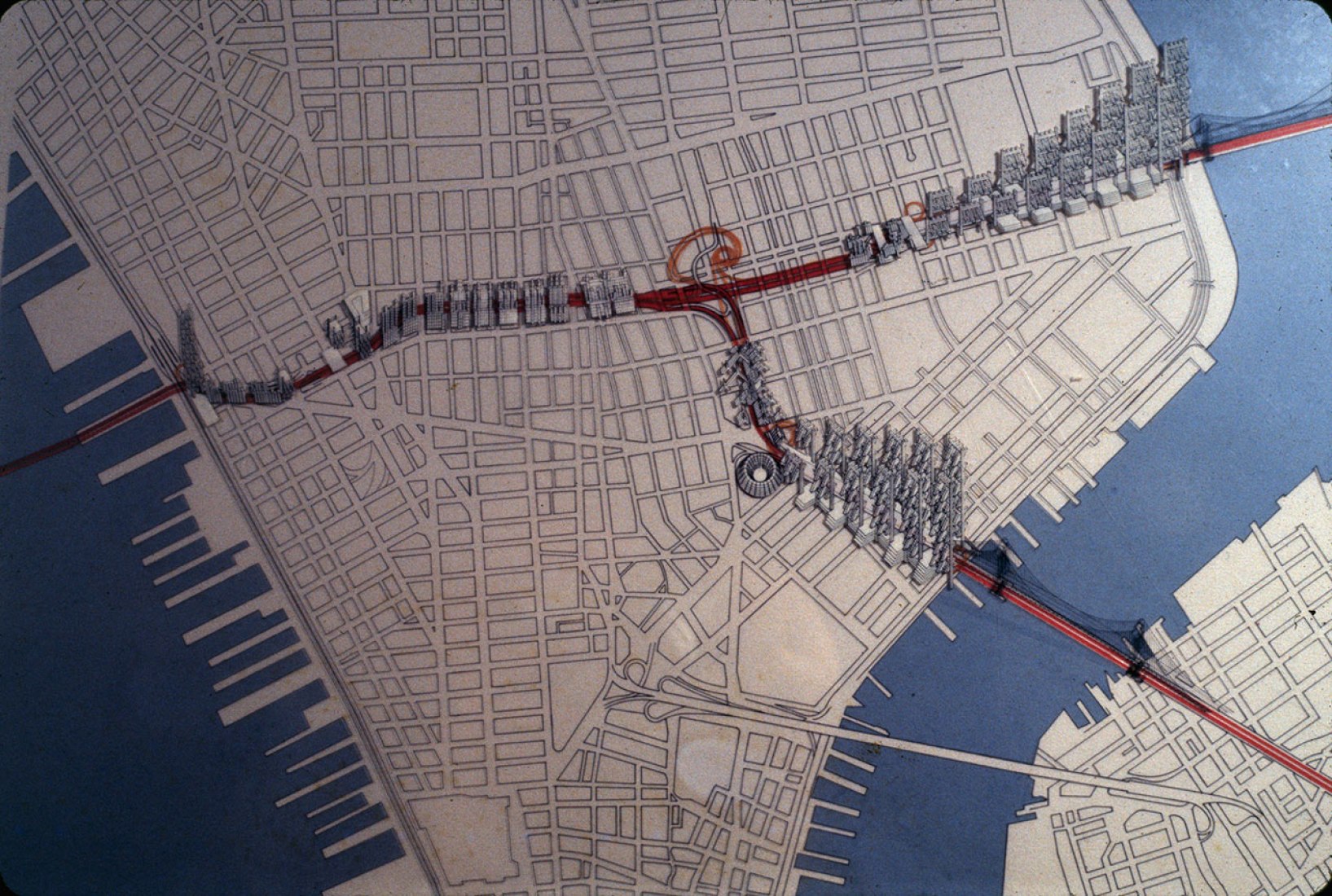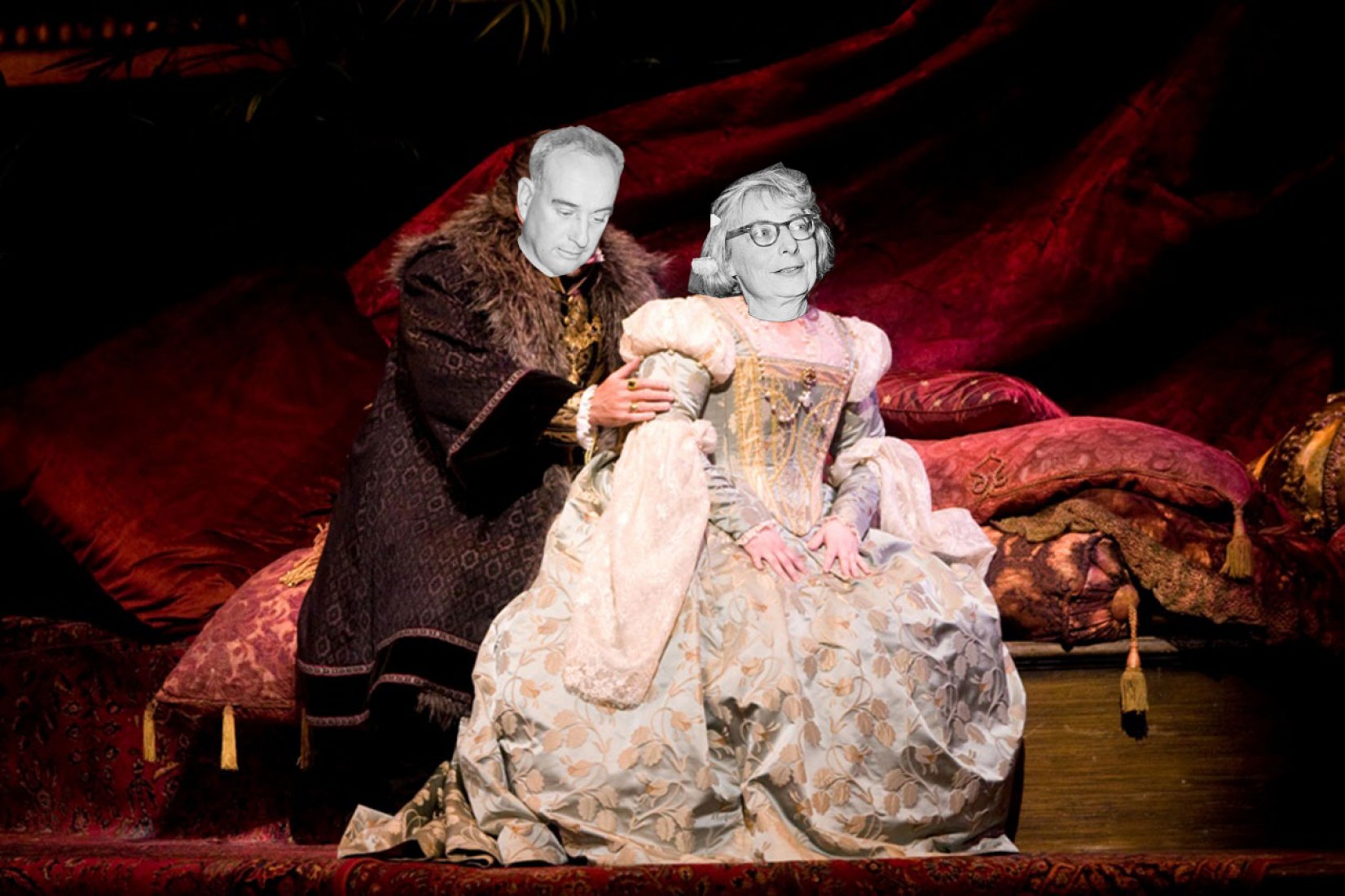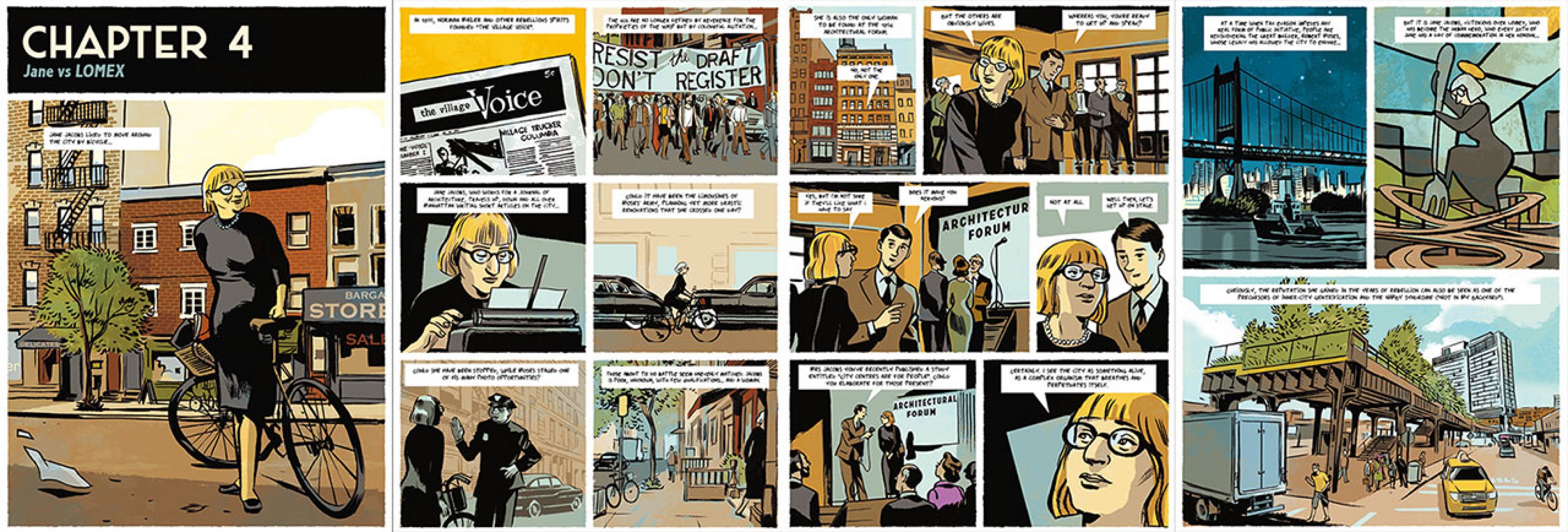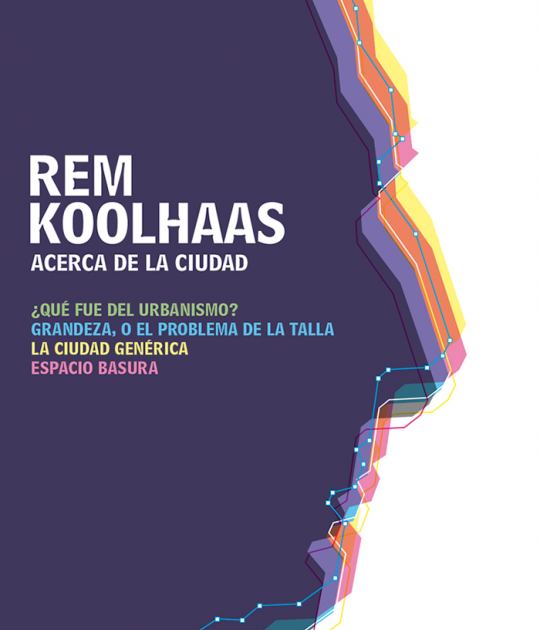With no specific academic training, Jane Jacobs observed the city from her own experience, and reported her thoughts from a close and flat point view, almost like urban recipes. This could have led to a naive approach to urban thought but it was a revolution in the appreciation of public space in large cities, understood as a meeting and social exchange place.
Does anyone today perhaps suppose than in real life the answers and solutions to the major issues that concern us may come from homogeneous settlements? Jane Jacobs asks in her book Death and Life of Great American Cities.
Besides her literary work, Jacobs stood out for her activism in the organization of social movements that were self-defined as spontaneous and that sought to paralyze urban projects that she understood would destroy local communities.
During the 50's and 60's she began the fight for which she would be best known. She did it in their own neighborhood, Greenwich Village, which would be transformed due to the expansion of the University of New York and the urban renewal plans of Robert Moses. The proposed renovation plan consisted in the construction of the Lower Manhattan Expressway, which would pass directly through the Washington Square Village dividing Soho, Little Italy and the Lower East Side through an elevated highway.
Jacobs formed the "Joint Committee to Stop the Lower Manhattan Expressway", recruiting characters as well known as Margaret Mead, Eleanor Roosevelt, Lewis Mumford, Charles Abrams and William H. Whyte. Finally, she managed to block the project and in June 25, 1958, the city closed the Washington Park Square to traffic.
Jacobs continued to struggle every time the project came to the surface in the years 1962, 1965 and 1968, becoming a local hero. On April 10, 1968 Jacobs was arrested for inciting a riot, for crimes against property and obstruction of public administration, finally her charges were reduced to disorderly conduct.
Shortly after being arrested, she moved to Toronto, where she lived the rest of his life. In Canada she conducted a series of fights among which it stands out her help to stop the Spadina Expressway project. She was considered the "Mother of Vancouverism" because of her influence on urban planning in the city of Vancouver, which uses her "density done well" philosophy.
As her book Death and Life of Great American Cities ends:
During the 50's and 60's she began the fight for which she would be best known. She did it in their own neighborhood, Greenwich Village, which would be transformed due to the expansion of the University of New York and the urban renewal plans of Robert Moses. The proposed renovation plan consisted in the construction of the Lower Manhattan Expressway, which would pass directly through the Washington Square Village dividing Soho, Little Italy and the Lower East Side through an elevated highway.
Jacobs formed the "Joint Committee to Stop the Lower Manhattan Expressway", recruiting characters as well known as Margaret Mead, Eleanor Roosevelt, Lewis Mumford, Charles Abrams and William H. Whyte. Finally, she managed to block the project and in June 25, 1958, the city closed the Washington Park Square to traffic.
Jacobs continued to struggle every time the project came to the surface in the years 1962, 1965 and 1968, becoming a local hero. On April 10, 1968 Jacobs was arrested for inciting a riot, for crimes against property and obstruction of public administration, finally her charges were reduced to disorderly conduct.
Shortly after being arrested, she moved to Toronto, where she lived the rest of his life. In Canada she conducted a series of fights among which it stands out her help to stop the Spadina Expressway project. She was considered the "Mother of Vancouverism" because of her influence on urban planning in the city of Vancouver, which uses her "density done well" philosophy.
As her book Death and Life of Great American Cities ends:
It is true that the inert and without-force cities often contain the seeds of their own destruction and little else. But instead, the cities of intense, lively and diverse life contain the seeds of their own regeneration and have enough energy to take on others' problems and needs.

